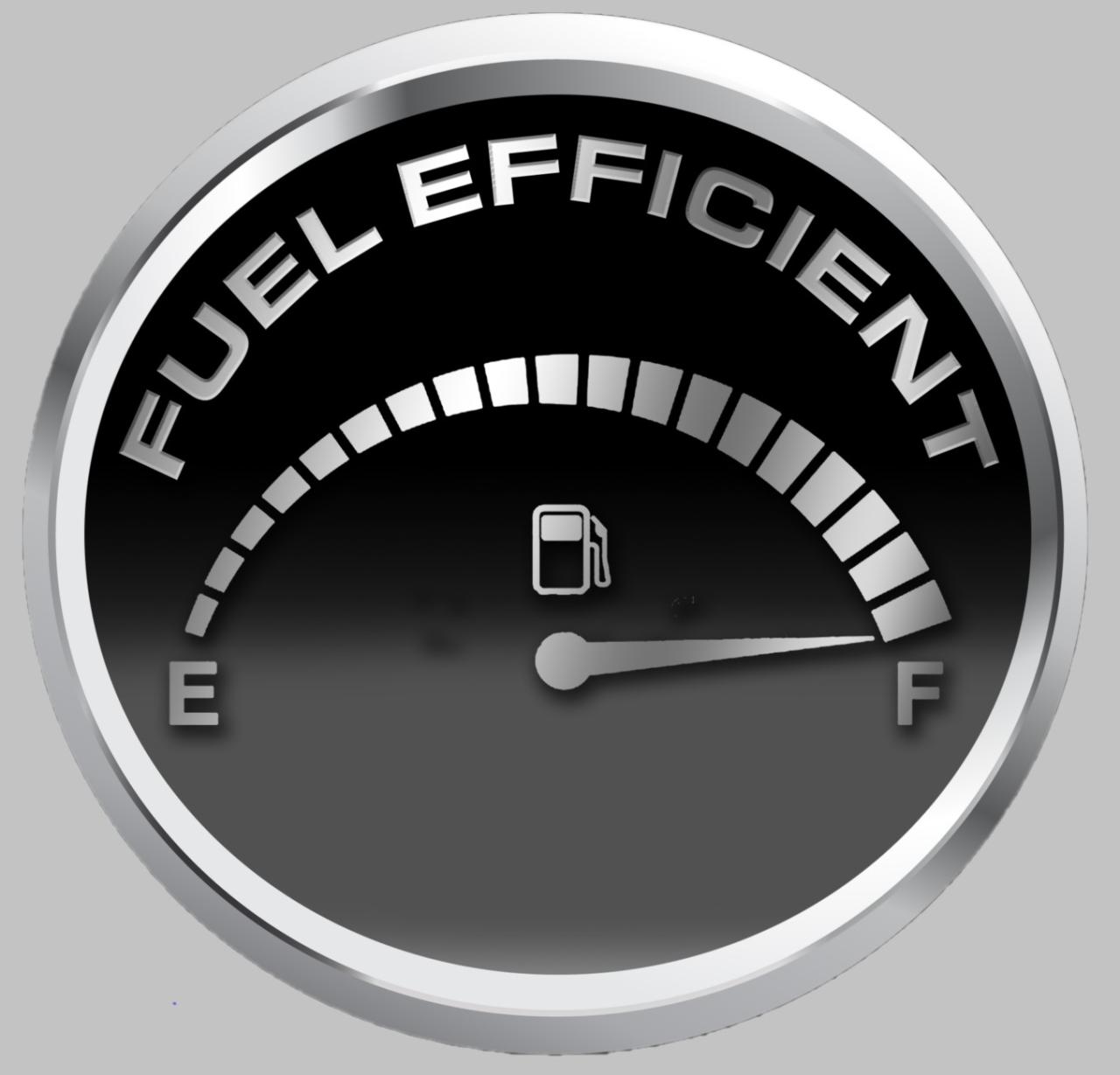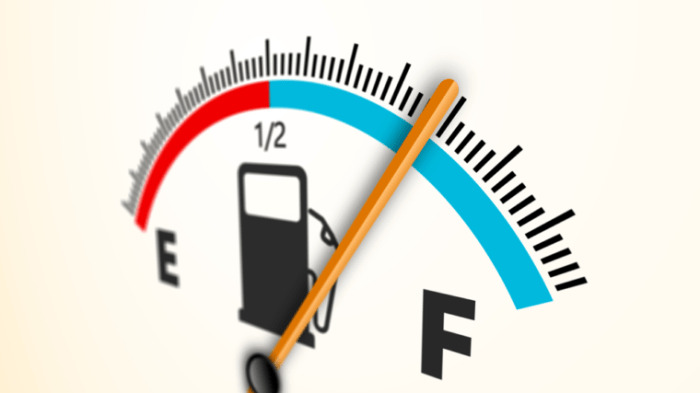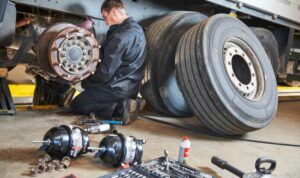Fuel efficiency tips are all the rage these days, helping you save money and the environment while cruising in style. Buckle up as we dive into the world of maximizing your vehicle’s fuel efficiency with these hip and practical tips.
Introduction to Fuel Efficiency Tips
Fuel efficiency refers to the ability of a vehicle to maximize the use of fuel for energy consumption. It is crucial for vehicles as it helps reduce the overall cost of fuel consumption, minimize environmental impact, and improve overall performance.
Improving fuel efficiency comes with a multitude of benefits. Not only does it save money on fuel costs, but it also reduces harmful emissions that contribute to air pollution and climate change. By adopting fuel efficiency tips, drivers can contribute to a healthier environment and save money in the long run.
Statistics show that vehicles with poor fuel efficiency not only cost drivers more money in fuel expenses, but they also release higher levels of greenhouse gases into the atmosphere. By implementing fuel efficiency strategies, individuals can significantly reduce their carbon footprint and lower their personal expenses on fuel.
Driving Habits
Maintaining good driving habits is crucial when it comes to fuel efficiency. By making simple adjustments to how you drive, you can save money on gas and reduce your carbon footprint. One of the key factors that affect fuel efficiency is your driving speed.
Maintain a Steady Speed
Driving at a consistent speed can significantly improve your fuel economy. Rapid acceleration and sudden braking can waste fuel, so try to maintain a steady pace whenever possible. Use cruise control on highways to help you stay at a constant speed and avoid unnecessary speed changes.
- Avoid unnecessary speeding up and slowing down.
- Anticipate traffic flow to minimize sudden stops and starts.
- Drive at or slightly below the speed limit to optimize fuel efficiency.
Impact of Aggressive Driving
Aggressive driving behaviors such as rapid acceleration, speeding, and abrupt braking can dramatically increase fuel consumption. These actions not only waste fuel but also put unnecessary wear and tear on your vehicle. By driving more smoothly and calmly, you can improve your fuel efficiency and extend the lifespan of your car.
Remember, a smooth and steady driving style is key to maximizing fuel efficiency.
Vehicle Maintenance

Regular vehicle maintenance is crucial for optimizing fuel efficiency. By keeping your car in top condition, you can ensure that it operates at peak performance, resulting in better gas mileage and reduced fuel consumption.
Importance of Tire Pressure
Maintaining proper tire pressure is essential for fuel efficiency. Underinflated tires can increase rolling resistance, causing the engine to work harder and burn more fuel. Be sure to check your tire pressure regularly and inflate them to the recommended levels specified in your owner’s manual.
Air Filter Maintenance
A clean air filter is key to fuel efficiency. A dirty air filter can restrict airflow to the engine, leading to decreased performance and increased fuel consumption. Make sure to inspect and replace your air filter according to the manufacturer’s recommendations.
Engine Tune-Ups
Regular engine tune-ups can significantly impact fuel efficiency. By maintaining proper spark plug and ignition system function, you can ensure that your engine is running efficiently and burning fuel effectively. Schedule tune-ups at recommended intervals to keep your engine in top shape.
Aerodynamics and Weight
When it comes to fuel efficiency, aerodynamics and vehicle weight play crucial roles in determining how efficiently your car uses fuel. Let’s dive into how these factors impact your fuel consumption and what you can do to improve it.
Reducing Air Drag
Reducing air drag is key to improving aerodynamics and fuel efficiency. One way to do this is by keeping your windows closed while driving at high speeds. This helps minimize drag and improves the overall aerodynamics of your vehicle.
Improving Aerodynamics
To further improve aerodynamics, consider removing roof racks or bike racks when they are not in use. These accessories can create additional drag, making your car less aerodynamic and reducing fuel efficiency. Additionally, keeping your car clean and waxed can help reduce drag by allowing air to flow smoothly over the surface of your vehicle.
Impact of Excess Weight
Carrying excess weight in your vehicle can also have a significant impact on fuel consumption. The more weight your car has to carry, the harder the engine has to work, leading to increased fuel consumption. To improve fuel efficiency, make sure to remove any unnecessary items from your car and avoid carrying heavy loads unless absolutely necessary.
Fuel Type and Octane Ratings
Fuel type and octane ratings play a crucial role in the fuel efficiency of your vehicle. Understanding the differences between various fuel types and octane ratings can help you make informed decisions to optimize your fuel efficiency.
Fuel Types, Fuel efficiency tips
When it comes to fuel types, the most common options are gasoline, diesel, and ethanol blends. Gasoline is the most widely used fuel for cars, while diesel is commonly used in trucks and some cars. Ethanol blends, such as E85, contain a mix of ethanol and gasoline. Each fuel type has different energy properties and combustion processes, affecting the overall fuel efficiency of your vehicle.
Octane Ratings
Octane ratings indicate the fuel’s resistance to engine knocking or pinging. The higher the octane rating, the more resistant the fuel is to premature ignition. While some high-performance vehicles require high-octane fuel to prevent engine knocking, using a higher octane fuel than necessary in a regular vehicle does not improve performance or fuel efficiency.
Choosing the Right Fuel
To optimize fuel efficiency, it is essential to use the fuel recommended by your vehicle’s manufacturer. Check your owner’s manual for the minimum octane rating required for your vehicle. Using the recommended fuel type and octane rating ensures proper engine performance and fuel efficiency without unnecessary expenses on higher octane fuels.
Alternative Transportation Options

When it comes to saving fuel and reducing your carbon footprint, exploring alternative transportation options can make a significant impact. By choosing methods like carpooling, public transportation, cycling, or walking, you can not only save money on fuel but also contribute to a cleaner environment.
Carpooling
Carpooling involves sharing a ride with others who are traveling in the same direction as you. It helps reduce the number of vehicles on the road, cutting down on traffic congestion and emissions. By carpooling, you can save money on fuel costs and reduce wear and tear on your vehicle.
Public Transportation
Using public transportation, such as buses, trains, or subways, is another great way to promote fuel efficiency. Public transportation systems are designed to carry multiple passengers at once, making them a more sustainable option compared to individual cars. Additionally, public transportation can help reduce traffic congestion and air pollution in urban areas.
Cycling
Cycling is not only a fuel-efficient mode of transportation but also a great way to stay active and reduce your carbon footprint. By biking to work or running errands, you can avoid using a car altogether, saving fuel and promoting a healthier lifestyle. Cycling also helps reduce traffic congestion and greenhouse gas emissions.
Walking
For short distances, walking can be a convenient and eco-friendly transportation option. By choosing to walk instead of drive, you can save fuel and reduce emissions while getting some exercise. Walking can also help improve your overall health and well-being.
Combining Trips and Planning Efficient Routes
One effective way to save fuel is by combining multiple errands into one trip and planning efficient routes. By grouping your errands together and minimizing unnecessary driving, you can reduce the amount of fuel consumed. Planning your routes in advance can also help you avoid traffic congestion and save time on the road.
